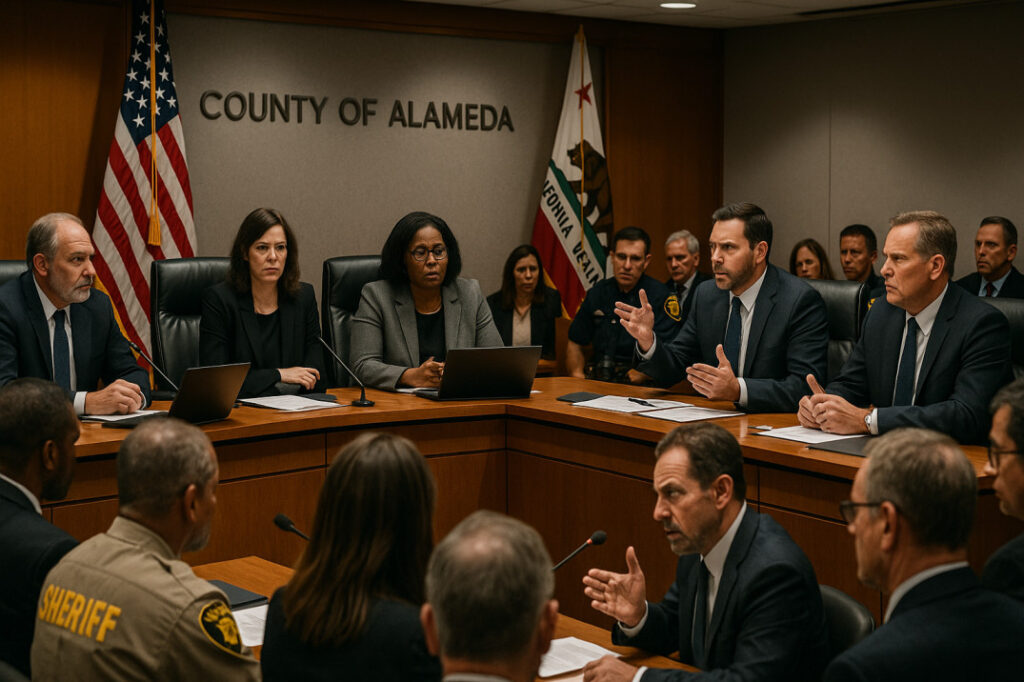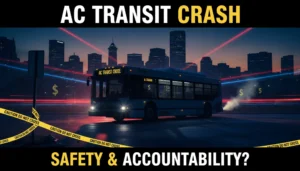Alameda County at a Crossroads: Supervisors Debate Law Enforcement and Social Services in Divisive Budget Battle


Alameda County, California – The past week has seen the Alameda County Board of Supervisors locked in intense deliberations over the county budget, as the balance between public safety and social services takes center stage. With crime rates and quality-of-life concerns on the rise, the Board’s decisions highlight the stark divide between those advocating for robust law enforcement and those pushing for expanded social programs. As residents and local officials grapple with the future direction of the county, the core question remains: will Alameda County double down on proven public safety methods, or will it continue down the path of progressive social spending, even as public concern grows?
The Budget Showdown
On Tuesday, the Board of Supervisors convened to discuss next year’s budget, a meeting that quickly became a microcosm of the political and ideological battles playing out across California and the nation. At issue: whether to maintain, cut, or increase funding for the Alameda County Sheriff’s Office and local police departments, or to divert those funds into social services ranging from housing to mental health initiatives.
Supervisor David Haubert, a vocal supporter of law enforcement and fiscal discipline, opened the meeting by calling attention to rising property crime, car break-ins, and violent incidents across Alameda County. “Our residents are worried,” Haubert said. “They want to feel safe in their homes and communities. That requires a well-funded, well-trained law enforcement presence. The data is clear: when you defund the police, you see a direct impact on public safety.”
Haubert’s remarks were met with applause from a sizable contingent of local residents, many of whom have grown frustrated with what they see as the Board’s increasingly progressive policies. Signs at the meeting read, “Fund the Police, Protect Our Streets” and “Safety First for Alameda Families.”
Progressive Push for Social Spending
However, not all Supervisors were in agreement. Supervisor Lena Tam, representing a more progressive district, countered by emphasizing the need to address root causes of crime, such as homelessness, addiction, and mental health. “Simply pouring more money into policing hasn’t solved our problems,” Tam argued. “We need to invest in our communities, in affordable housing, in mental health services, and in economic opportunities for our youth. That’s how we make Alameda safer for everyone.”
Tam’s position was echoed by several left-leaning advocacy groups present at the meeting, who argued that over-policing in minority communities and a lack of social support have exacerbated the county’s challenges. “We need care, not cages,” said one activist, demanding that funds be reallocated from the Sheriff’s Office to social programs.
Residents Speak Out
Public comment at the meeting reflected a deep divide in the community. Many longtime residents, particularly those who have seen their neighborhoods change in recent years, expressed fears over the rise in crime and the apparent lack of consequences for offenders.
“I’ve lived here 40 years,” said Oakland resident Maria Sanchez. “Never have I felt so unsafe as I do now. My car’s been broken into three times this year. My neighbor was mugged walking home from the grocery store. We need more police on the streets, not fewer.”
Others, however, spoke in favor of shifting resources to social services, arguing that the true path to safety lies in addressing poverty and systemic inequality. “If we want to end crime, we have to end desperation,” said James Wu, a social worker in Hayward. “People need housing, jobs, and hope.”
Law Enforcement Responds
In what many saw as a pivotal moment, Alameda County Sheriff Yesenia Sanchez addressed the Board directly. She cited statistics showing that while arrests are down, calls for service and reported crimes have surged over the past year. Sanchez warned that continuing to shrink law enforcement budgets would have dire consequences.
“Our deputies are stretched thin,” Sanchez said. “Response times are up, and morale is down. We cannot keep our communities safe if we do not have the resources to do our jobs. Cutting funding is not the answer—partnership is.”
Sanchez also pointed out that the Sheriff’s Office has made significant efforts to improve transparency, accountability, and community engagement, but emphasized that these initiatives require stable funding.
Fiscal Realities and Government Accountability
Beyond the public safety debate, the meeting highlighted deeper concerns about fiscal responsibility and government transparency. Several Supervisors raised questions about how taxpayer dollars are being spent and whether new social programs are truly effective or merely symbolic.
Supervisor Nate Miley pressed for data on the outcomes of recent social service expansions, saying, “If we’re going to invest millions in new programs, we need to see results. The public deserves accountability. Otherwise, we’re just throwing good money after bad.”
Some residents echoed these concerns, recalling recent headlines about waste and mismanagement in county departments. “Before you ask for more of our money, show us it’s being used wisely,” said Pleasanton business owner Ron Bell.
National Implications
Observers note that Alameda County’s budget battle mirrors a national debate about public safety, policing, and the role of government. Cities from San Francisco to New York have faced similar dilemmas, with some rolling back police cuts after spikes in crime, while others double down on progressive policies.
For conservatives in Alameda County, the outcome of this debate feels particularly urgent. Many see the county as a bellwether for the broader region and state. If law enforcement is further weakened, they warn, the consequences could be dire—not only for public safety, but also for the county’s economy and quality of life.
Looking Ahead
As the Board of Supervisors prepares for a final vote on the budget, activists on both sides are mobilizing. Law enforcement supporters are organizing rallies and letter-writing campaigns, while social justice advocates are planning protests and community forums.
The stakes could not be higher. For families worried about safety, business owners concerned about theft, and taxpayers demanding accountability, the Board’s decision will shape the future of Alameda County for years to come.
Conclusion: A Choice for Alameda’s Future
The debate over law enforcement and social services in Alameda County is about more than just numbers on a spreadsheet—it’s about values, priorities, and the kind of community residents want to build. While some Supervisors continue to push for progressive reforms, many believe the time has come to restore balance, prioritize public safety, and ensure that government spends taxpayer dollars wisely.
As Supervisor Haubert put it, “We’re at a crossroads. Alameda County can choose safety, stability, and fiscal responsibility—or we can continue down a path that’s left too many residents feeling unsafe and unheard. The choice is ours.”
In the weeks ahead, all eyes will be on Alameda County as it grapples with these fundamental questions. For conservatives, the message is clear: public safety must come first, and government must be held accountable to the people it serves.












